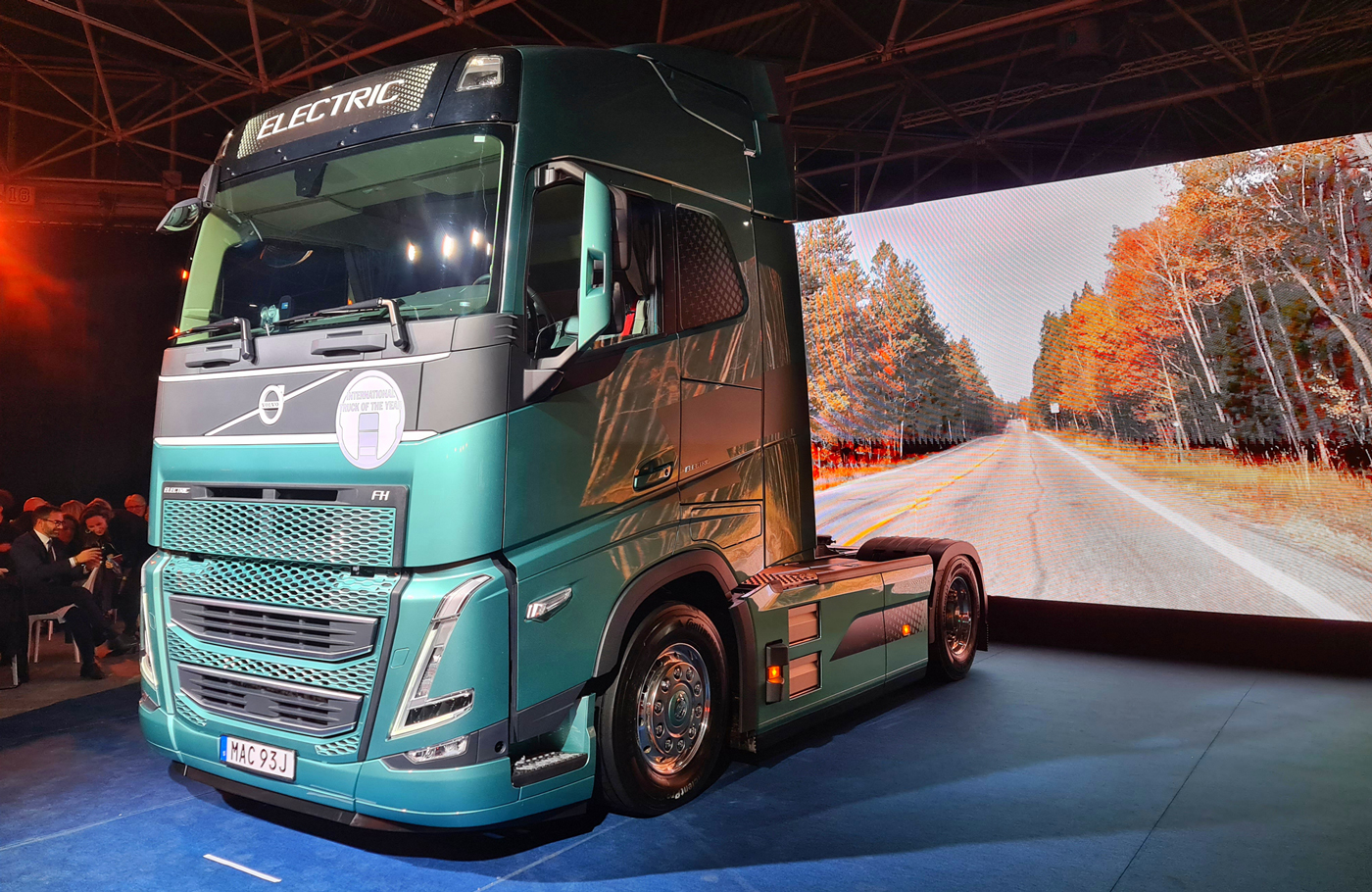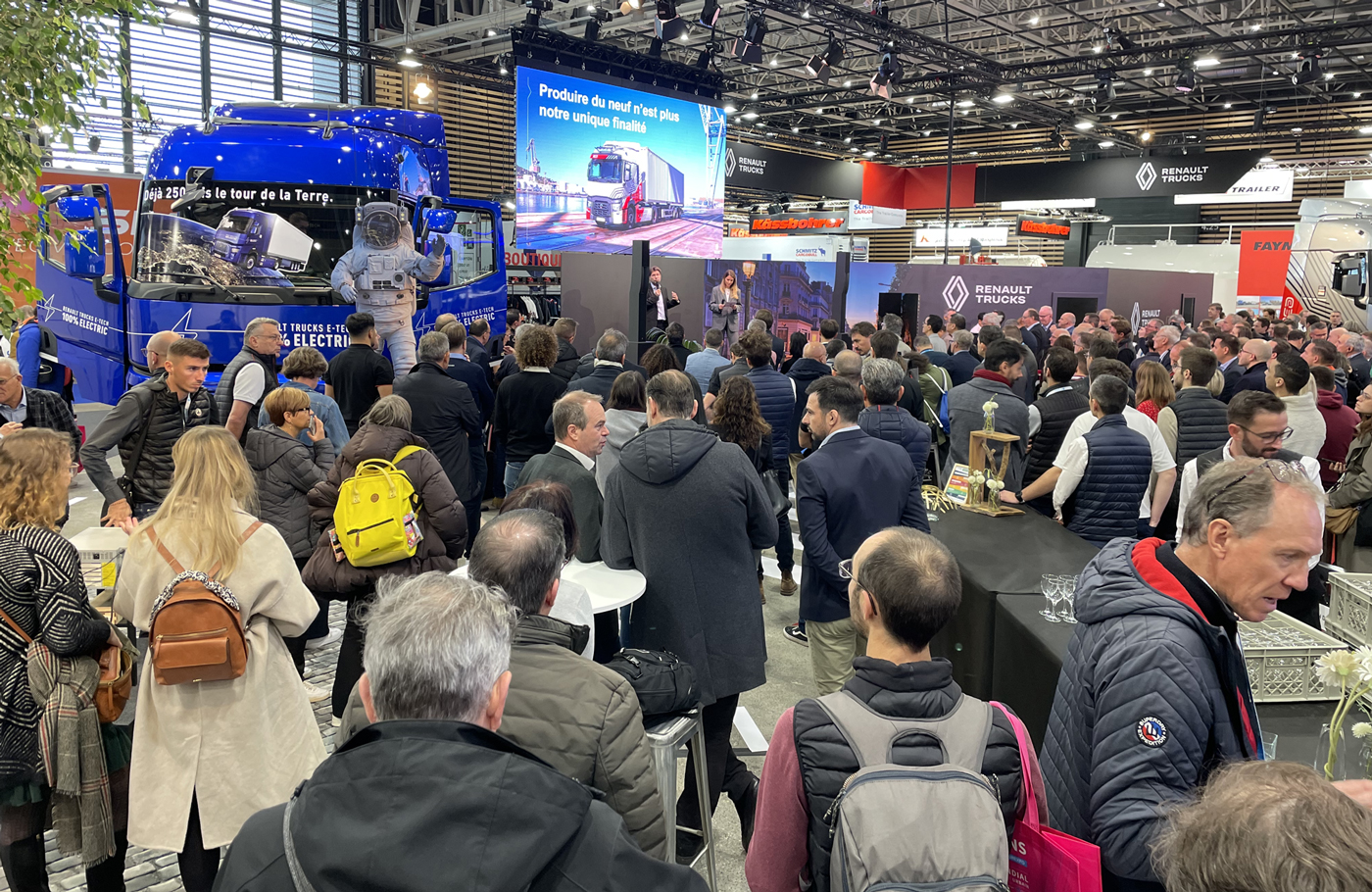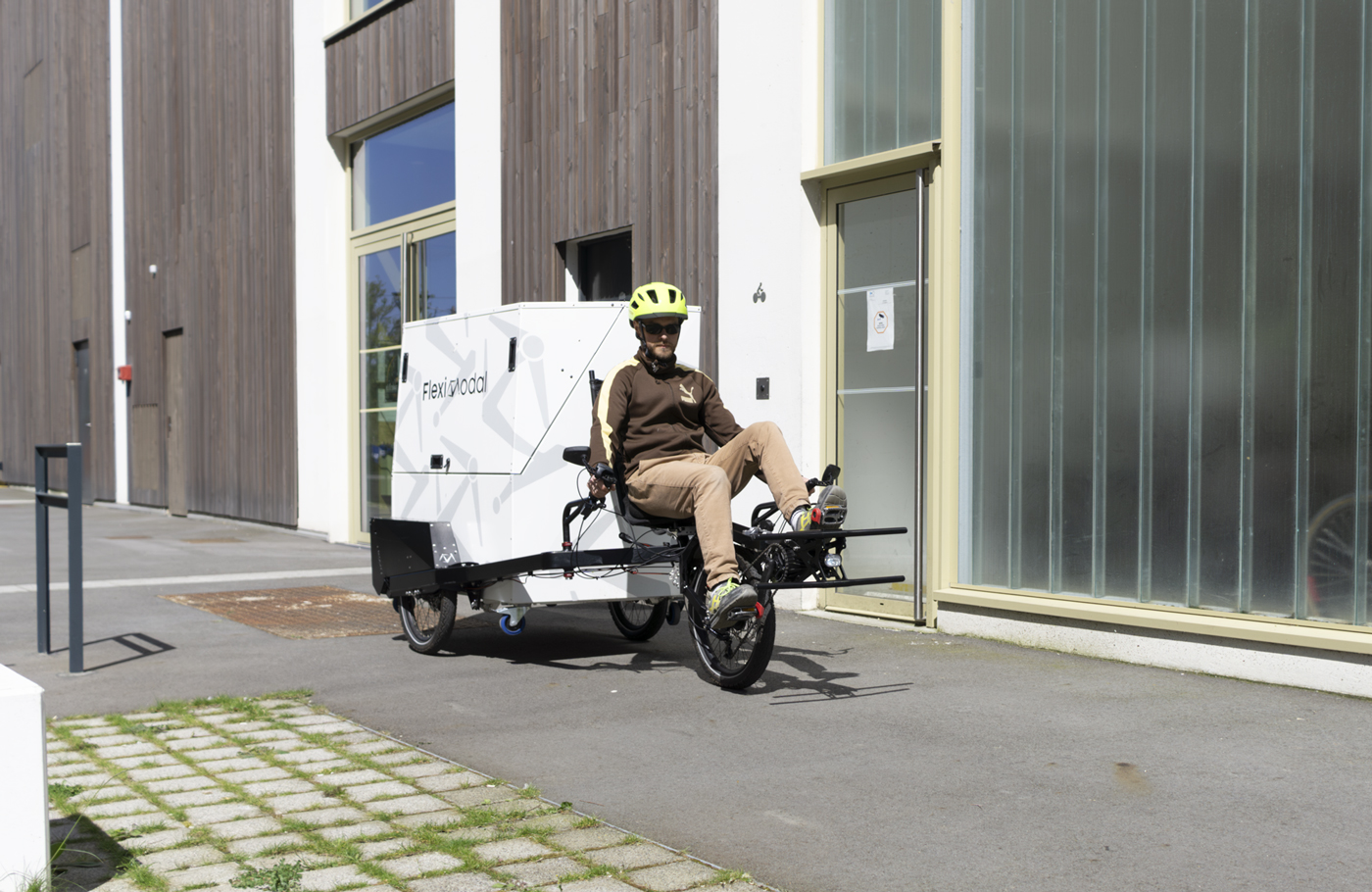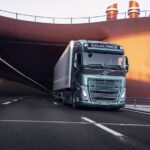Solutrans 2023 delivers big on sustainability
Solutrans 2023 delivers big on sustainability
From 21 to 25 November, more than 64,000 industry professionals descended on the Eurexpo in Lyon, France for one of Europe’s largest gatherings of light and heavy commercial vehicles (LCVs and HCVs). Solutrans 2023 lived up to its well-earned reputation as an unmissable event on the international commercial vehicle calendar, as it continues to grow its reach and influence.
This year’s record-breaking attendance at Solutrans included a veritable who’s who of the commercial vehicle game and associated sectors, with a total of 1,100 exhibitors and brands representing a diverse range of manufacturers, equipment suppliers, bodybuilders and service companies from the LCV and HCV sectors.
French transport minister Clément Beaune inaugurated the show, acknowledging the words on everyone’s lips: “zero-carbon”. Beaune stressed the important role Solutrans plays in shining a light on the latest innovations in this field and the sector at large, and paid tribute to the work being done. “We are seeing a huge amount of investment, innovation, and solutions from major manufacturers: solutions that are fundamental for decarbonisation,” he said. “I strongly believe that the low carbon challenge will be met, thanks to the transport sector.”
A major attraction in 2023 was the Solutrans Digital Show – a digital twin to the main show – which facilitated proceedings and opened the expo up to an even wider audience online. To get a real feel for the event, however, nothing could compare to putting feet on the ground and taking in the dazzling array of transport delights on display. Let’s take a peek at a few of the offerings to which visitors were treated.
New trucks and line-ups presented at Solutrans
DAF premiered its New Generation XB series at the show. “With the world premiere of the New Generation DAF XB series at Solutrans, we add a new chapter to our success story,” enthused Renaud Dehillotte, MD of DAF Trucks France. Europe’s first 12-tonne electric city distribution truck, the XB Electric, took centre stage, ably supported by the XD Electric for regional distribution, the XFC for construction applications, and the top-of-the-range XG⁺ for long-haul.
The first European manufacturer to introduce a range of battery-electric (BE) trucks to the market, DAF’s comprehensive line-up sets the benchmark for sustainable city distribution. The compact 12-tonne XB Electric model is available with wheelbase options starting from 4.2m, as well as 16- and 19-tonne configurations. The e-motor provides 120 or 190kW, and peak torque of 2,600 and 3,500Nm. The cobalt and magnesium-free lithium ferrophosphate (LFP) high energy density battery packs deliver 141 to 282kWh, enabling zero-emission ranges of up to 350km.
The XD Electric is powered by PACCAR’s EX-D1 or EX-D2 permanent magnet e-motor, with outputs from 170kW/230hp to 350kW/480hp. The full range of battery packs with two to five strings provides zero-emission ranges of over 500km. The XFC, meanwhile, is equipped with 10.8-litre MX-11 or 12.9-litre MX-13 PACCAR engines. Its low kerb weight offers high payloads, and this versatile model is available in 4×2, 6×4, and 8×4 axle configurations. The flagship XG+ rounded out the stand; visitors were impressed by the sleek aerodynamic design, which maximises fuel efficiency, and the spacious interior.







Daimler’s stand centred on Mercedes-Benz Trucks’ eActros 600 for the long-haul sector. With a focus on sustainability and profitability, the eActros 600 can drive for 500km on a single charge, supported by megawatt charging from 20 to 80% in just half an hour. This is thanks to its newly developed LFP batteries, which offer a service life of up to 1.2 million kilometres. The truck’s innovative eAxle provides 600kW peak output, with performance optimised in conjunction with Predictive Powertrain Control and four-speed transmission.
Daimler sees the eActros 600 as a game-changer for the industry, and the truck comes as part of an overall integrated solution for clients as an introduction to eMobility. This includes eConsulting, whereby clients can get answers to any questions that arise, as well as access a suite of financial services and digital services.
Ford Trucks exhibited its new F-LINE Series of construction trucks, boasting advanced safety features and powered by connected vehicle technology. The F-MAX Select – a new, limited version of the 2019 ITOY award-winning F-MAX – caused quite a stir, as did the hydrogen combustion engine on display. “Our pioneering hydrogen combustion technology exemplifies our unwavering commitment to innovation and sustainability,” emphasised Emrah Duman, vice president at Ford Trucks, adding that confidence in hydrogen’s future has reinforced Ford’s prioritisation of green technologies and its commitment to achieving zero emissions in HCV production by 2040.
Iveco brought a completely renewed range of products and services to the public for the first time. The manufacturer’s new 100% electric heavy tractor and eDaily were the stars of a range that covers all segments of the market. Both these trademark vehicles are available in diesel, biodiesel (XTL and HVO), and compressed natural gas (CNG)/BioCNG versions. Iveco made sure to reiterate its commitment to a multi-energy approach for tackling the transition to sustainable fuels. The new range includes a host of alternative solutions, from electric vehicles to the BioCNG versions, which offer a renewable version of natural gas for vehicles.
BioCNG was a central focus for Iveco, reinforcing its belief in the potential of this sustainable biomethane to profitably decarbonise road freight transport. At Iveco’s stand, visitors were – amongst other things – also able to discover all the details about the brand’s overall alternative energy strategy; IVECO ON, its range of integrated services and transport solutions; and the Premium Partner programme, which was launched during Solutrans with the aim of strengthening the Iveco’s partnerships with bodybuilders.
MAN launched its electric truck range, comprising the MAN eTGX and MAN eTGS, dedicated to long-haul transport and regional distribution and specific uses, respectively. Both come in various configurations, with 240 to 480kW battery capacity (320 to 480kWh for the 4×2 tractor), and can accommodate three to six battery packs (four to six for the 4×2 tractor). The MAN eManager digital service was also nominated for a 2023 Solutrans I-nnovation Award. The service provides comprehensive charge management as well as vehicle and battery monitoring.
The world premiere of the all-new Master took place on the Renault stand – and it was great to see the big reveal (we were treated to a sneak preview of the vehicle; before the world launch, we drove a heavily disguised prototype in France).
The fourth-generation Master will come in 20 body shapes with front or rear-wheel drive and loading areas of 11 to 22m3. The first thing one notices when viewing the new van is, of course, the gorgeous exterior design. The front looks absolutely enormous and features Renault’s new logo and extra-large full-LED headlamps in the signature C-shaped array around the in-your-face grille. There is a narrowed back end, while the rear window – a characteristic feature of the Master – is asymmetrical. The rear lights, like those at the front, still have the distinctive C-shaped design. The most efficient and aerodynamic van in its class, the all-new Master’s CO2 emissions are a substantial 39g/km lower than its third generation (they’re now below the 200g/km mark) while the electric version consumes 20% less energy.
The interior is equally impressive – it’s far more luxurious and elegant than one would expect to find in the interior of a commercial vehicle, but manages to be practical at the same time. Essentially a mobile office, the new Master has lots of nifty features. For instance, the back of the middle seat folds down to create a desk, while there are USB-C ports for powering devices. Tech features abound in this van. Probably the most impressive is the OpenR Link multimedia system (it’s the first time that OpenR Link with Google built-in capabilities is available in a LCV). Developed with Google, the system runs on Android Automotive OS 12 and includes Google Maps navigation capabilities, the Google Play app catalogue, and the voice-controlled Google Assistant.
Three different engine choices will be available – eventually. There are four conventional diesels (all Blue dCi powertrains), delivering 78, 97, 112, or 127kW. These consume substantially less (1.5 litres less per 100km on average) and release less CO2 (39 grams less per km) than their predecessors. The engines can be matched to a conventional manual gearbox, or the particularly efficient new EAG9 nine-speed automatic converter gearbox.
Then there are the electric versions (which we got to drive). They’re powered by a 96- or 150-kW motor, in both cases delivering 300Nm of torque. The first runs on a 40-kWh battery and has a 180-km WLTP range, while the second has an 87-kWh battery with over 410-km WLTP range. The third powertrain – a hydrogen engine and fuel cell – is coming in future.
There are an incredible 20 safety features in the new Master, including systems that bolster lateral stability, automatic emergency braking, trailer stability, and an intelligent speed assist system to help the driver stay within the speed limit. The power-assisted dynamic braking control system – which halves braking time – is also fabulous. We experienced it while testing the prototypes and it’s super impressive. We look forward to an extended test drive in the van in the future!
Renault Trucks also presented an all-encompassing strategy for the road to decarbonisation, highlighting its solutions for low-carbon transport. This involves producing trucks with ever-improving energy efficiency, providing all-electric solutions for emission-free transport during use, extending the life of its vehicles under a circular approach, and working on solutions for 100% carbon-free last-mile logistics. Exhibiting in its historic birthplace, the manufacturer displayed a total of 10 trucks and now offers a complete range of all-electric vehicles, from 650-kg cargo bikes to 44-tonne tractors and urban construction trucks.
Alternative sustainability: darling of the show
Like Iveco, Scania presented an intriguing stand at Solutrans 2023, showing off alternative sustainable solutions including hybrid and biofuel vehicles, alongside the much-hyped electric vehicles on display by most manufacturers.
The Swedish manufacturer introduced major updates to its urban BEV solutions, including chassis adapted to electrification, new batteries, and optimised auxiliary systems. Scania’s biogas heavyweights made quite a splash – the new 13-litre engines provide 420 or 460hp, satisfying the demand for high-horsepower offerings in Europe, especially in the long-haul sector. The manufacturer emphasises that there is a real interest in trucks running on locally produced biomethane, which has the capacity to reduce CO2 emissions by up to 90% in well-to-wheel values.
“We can now have tractor/semi-trailer combinations for long-haul applications with a permissible total rolling weight of 40 tonnes, combined with ranges of up to 1,400km with liquefied biomethane in their tanks,” elaborated Stefan Dorski, senior vice president and head of Scania Trucks. “As the available gas station networks expand quickly too, trucks equipped with a gas engine became a very solid alternative for customers who want to phase out the use of fossil fuels and reduce their carbon footprint.”
Dorski says the company sees a lot of commercial potential in biomethane because of its flexibility, all-round economy, and autonomy, noting that markets where gas once represented a marginal share are starting to recognise its increasing allure.
Tyres keep rolling alongside innovative solutions and much, much more
Tyre manufacturers also rolled out their wares at the expo. The Michelin Group was an official partner of the show and continued its series of conferences with experts in their fields. Apollo Tyres showcased new and popular tyres with increased durability and fuel efficiency, while Hankook launched the world’s first tyre for an electric commercial vehicle. Global leader in tyre equipment and supplies manufacture, MARTINS, also presented its latest solutions and innovations, including new wheel maintenance, safety solutions, and tyre shop equipment.
A wide range of other innovations and products were on display at a startlingly varied show. Allison, for example, showcased its fully-automatic transmissions for the 35 household waste collection trucks added to the Strasbourg metropole’s renewed fleet, that help waste collection teams to optimise their work in urban environments.
Granula showed off its semi-trailer moving floors, including the new G-Aero model. Schmitz Cargobull, meanwhile, showcased its efficient and sustainable transport solutions, including a first look at its new semi-trailer curtainsiders, the S.CS X-TOUGH and the S.BO PACE dry freight vehicle.
Leading controlled-temperature transportation solutions manufacturer Thermo King was also on hand with the Thermo King “E-Zone”, where it unveiled electric alternatives to conventional refrigerated transport solutions and emphasised its commitment to a clean, quiet, and efficient cold supply chain.
A host of other alternative solutions for niches in the sector were also on show, such as FlexiModal’s TricyLift innovation for last-mile deliveries: a cargo bike boasting novel architecture. The TricyLift – aimed at parcel and urban delivery professionals – incorporates patented Lift&Go technology to easily lift and transport micro-containers, and will be released next year.
All in all, Solutrans 2023 was an electrifying success, and if the growth in interest in this show is anything to go by, decarbonisation in the industry and a shift towards more sustainable processes will keep being delivered to an increasing number of markets and customers around the world. Au revoir, until Lyon in November 2025!
Published by
Focus on Transport
focusmagsa












